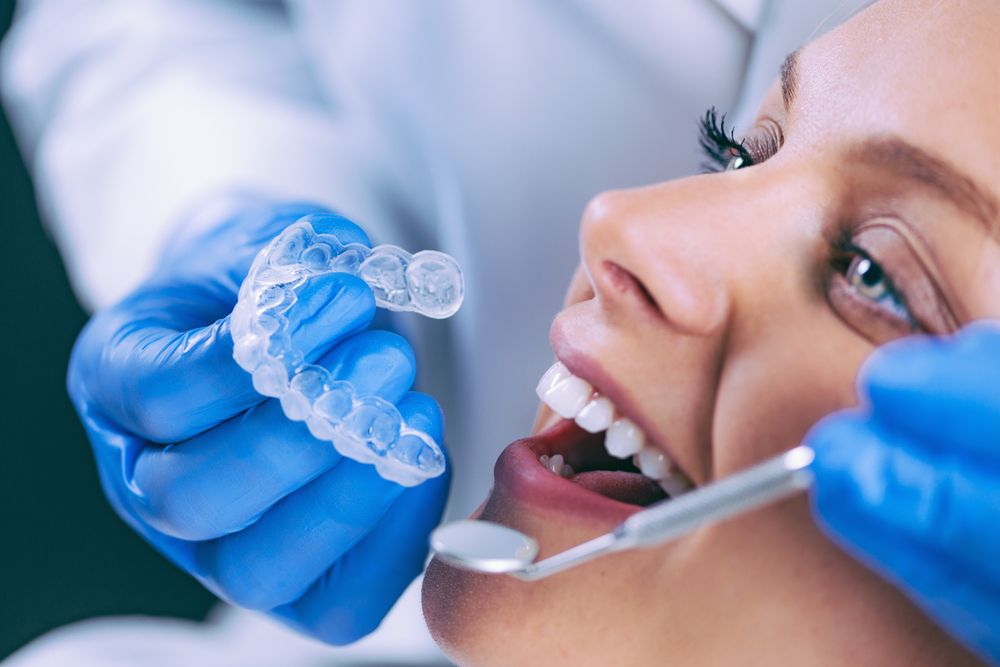
The dental industry is witnessing a significant transformation thanks to continuous advancements in technology. These innovations are not only enhancing the efficiency of dental practices but also significantly improving patient care. From clear aligners to virtual reality tools designed to beat dental anxiety, the latest technological developments are making dental visits less daunting and more effective.
Clear Aligners: A Revolution in Orthodontics
One of the most notable innovations in dental technology is the advent of clear aligners. These modern orthodontic devices have revolutionized the way teeth are straightened, offering a discreet and comfortable alternative to traditional metal braces. Clear aligners, such as Invisalign, are custom-made from medical-grade plastic and designed to fit snugly over the teeth, gradually shifting them into the desired position.
Clear aligners offer numerous benefits over traditional braces. They are virtually invisible, making them an appealing choice for adults and teenagers who are self-conscious about wearing braces. Additionally, clear aligners are removable, allowing patients to maintain their regular oral hygiene routines and eat without restrictions. This not only improves oral health but also reduces the risk of cavities and gum disease associated with fixed braces.
The precision and customization of clear aligners are another significant advantage. Advanced imaging technology, such as 3D scanning and computer-aided design (CAD), ensures that each set of aligners is tailored to the patient’s unique dental structure. This personalized approach results in more effective and predictable treatment outcomes.
Digital Dentistry: Enhancing Accuracy and Efficiency
Digital dentistry encompasses a range of technologies that are transforming dental practices. These include intraoral scanners, CAD/CAM (computer-aided design and computer-aided manufacturing) systems, and 3D printing. Intraoral scanners enable dentists to create highly accurate digital impressions of a patient’s mouth, eliminating the need for traditional, messy impression materials. These digital impressions can then be used to design crowns, bridges, and other dental restorations with unparalleled precision.
CAD/CAM technology allows for the rapid and accurate fabrication of dental restorations. Dentists can design a crown or bridge on a computer screen and then use a milling machine to create the restoration from a solid block of ceramic or composite material. This not only speeds up the process but also improves the fit and durability of the final product.
3D printing is another groundbreaking innovation in digital dentistry. It enables the production of complex dental structures, such as surgical guides, dentures, and even clear aligners, with high precision and efficiency. 3D printing reduces the time and cost associated with traditional manufacturing methods, making high-quality dental care more accessible to patients.
Laser Dentistry: Minimally Invasive Treatments
Laser dentistry is an emerging field that uses focused light energy to perform a variety of dental procedures. Lasers can be used for soft tissue procedures, such as gum reshaping and the treatment of periodontal disease, as well as hard tissue procedures, such as cavity preparation and tooth whitening.
The use of lasers in dentistry offers several advantages. Laser procedures are typically less painful and require less anesthesia than traditional methods. They also reduce bleeding and swelling, leading to faster healing times. For patients with dental anxiety, laser dentistry can be a game-changer, as it minimizes discomfort and the need for invasive tools.
How to Beat Dental Anxiety: Innovative Solutions
Dental anxiety is a common issue that prevents many people from seeking the care they need. Innovations in dental technology are playing a crucial role in addressing this problem, making dental visits more comfortable and less stressful.
One such innovation is the use of virtual reality (VR) to create a calming and distraction-free environment for patients. By wearing VR goggles, patients can immerse themselves in a relaxing virtual world while the dentist performs the necessary procedures. This technology has been shown to significantly reduce anxiety and improve the overall patient experience.
Another effective approach to beating dental anxiety is the implementation of sedation dentistry. Modern sedation techniques, such as nitrous oxide (laughing gas) and oral sedatives, help patients relax during their appointments. These methods are safe and allow patients to remain conscious and responsive while feeling more at ease.
Additionally, the use of patient-centered communication and education tools can help alleviate dental anxiety. Dentists can use visual aids, such as intraoral cameras and educational videos, to explain procedures and treatment plans clearly. This transparency builds trust and empowers patients to feel more in control of their dental care.
The Future of Dental Technology
The rapid pace of technological advancements in dentistry shows no signs of slowing down. In the future, we can expect to see even more innovative solutions aimed at improving patient care and practice efficiency. Artificial intelligence (AI) and machine learning are poised to play a significant role in diagnostics, treatment planning, and patient management. AI-powered tools can analyze vast amounts of data to identify patterns and predict outcomes, enabling more accurate and personalized dental care.
Teledentistry is another promising development that is set to transform the industry. Through virtual consultations and remote monitoring, teledentistry expands access to care, particularly for patients in rural or underserved areas. It also offers the convenience of receiving dental advice and follow-up care from the comfort of one’s home.
In conclusion, the dental industry is undergoing a remarkable transformation driven by technological innovations. From clear aligners to advanced digital tools and anxiety-reducing techniques, these advancements are enhancing the quality of care and making dental visits more efficient and pleasant. As technology continues to evolve, the future of dentistry looks bright, promising even greater improvements in patient outcomes and overall oral health.
